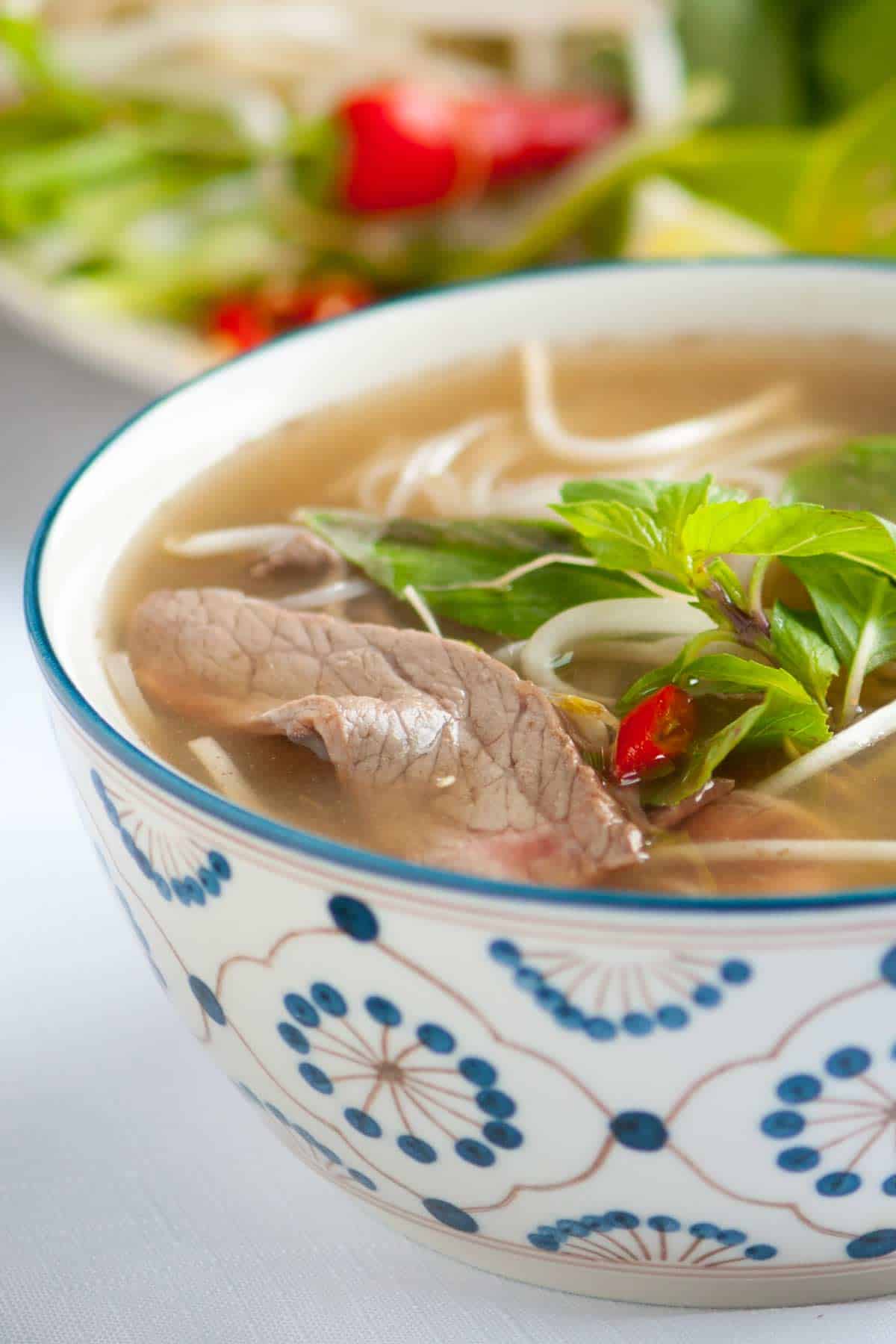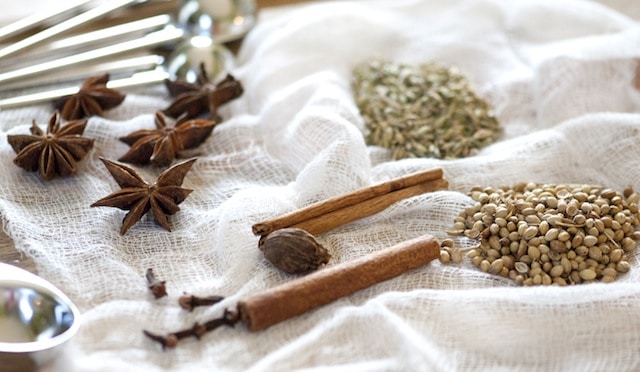How to Make the Best Homemade Pho
How to Make the Best Homemade Pho
Seven Secrets for Making the Best Pho Soup
If you’re sitting there and wondering “what is pho,” it’s a delicate (and delicious) Vietnamese noodle soup made from beef bones, ginger, onions, and lots of aromatic spices. It’s nothing short of soup perfection. The way all the spices and flavors from star anise, cardamom, fennel seeds, and cinnamon come together is incredible, and the best part? You can customize; it’s encouraged that you add any condiments you desire to make the soup your own.

The Best Bones for Making Pho
We make this at least once a month and always make sure there is leftover broth to freeze for another day. While it takes a bit of time, most of that is hands-off, so let’s get going towards amazing pho at home, shall we?
You can’t make an excellent soup without great beef bones. So, look for knuckle and leg bones that contain marrow. We buy beef knuckles from a local Asian market and find them to be pretty inexpensive.
Substituting store-bought beef broth for this homemade beef broth just won’t cut it. We know our process takes longer than some, but trust me, this homemade pho broth has so much more flavor. You won’t regret it.
You may also like these Pho-inspired grilled chicken wings!
It’s Best to Parboil and Rinse the Bones
When you simmer bones they release “scum” or impurities. If you don’t get rid of this, you’ll be stuck with a cloudy broth. Not good. We like our soup to be as clear and clean as possible, so we add an extra step.
Add the bones to a large stockpot, cover with cold water then bring to a boil. Boil for a few minutes, and then pour the water and bones into a strainer.
Discard the water then rinse the bones to get rid of all the impurities. Also, make sure you give the pot a rinse, too — there will be scum on the bottom and sides of the stockpot.
Char The Onion and Ginger
To create that distinctive and deep flavor of great Pho, slide onion and a sizable piece of ginger under the broiler. Broil until well charred. That’s going to give you excellent flavor and color.
Don’t Forget the Spices and Toast Them
Even though we’re simmering the broth with spices for a few hours, we still like to give all the spices a quick toast before adding to the pot.

To toast the spices, throw them into a dry pan over medium heat, stay close and shake the pan a couple of times to make sure they toast. You’ll know when they’re ready when you start to smell them. It only takes two to three minutes.
Yellow Rock Sugar
Don’t just use regular white sugar from your pantry. We know that buying yellow rock sugar seems pretty particular, but here’s the deal: using plan old sugar sadly produces a sweet, flat broth, whereas the rock sugar rounds things out and brings everything together. Plus, you’ll need that leftover rock sugar for the next time you make this recipe!
Use Fish Sauce
Buy some. You really can’t make pho soup (or other Vietnamese recipes) without it. Our fish sauce sits within arm’s reach of our stove. We use it in everything and absolutely will not make pho without it.
Andrea Nguyen of Viet World Kitchen suggests that when shopping for fish sauce, look for glass bottles, not plastic and allow price to guide you. Go for the mid-high priced fish sauce (which will run you $4 to $5).
Update: We have recently given Red Boat Fish Sauce 40°N a try and we prefer it over other ones we have tasted. We like the clean fish flavor it has over other brands.
The Best Noodles and Condiments
You can buy fresh noodles at Asian markets, which is a nice treat, but dried rice noodles work perfectly as well. Even if you use fresh or dried, never cook the noodles in the broth.
If you do this, the broth will become cloudy. So, cook them in another pot (they only take a few minutes) and add the cooked noodles to your bowl just before adding hot broth.
As for condiments, we’re partial to Thai basil (you can substitute regular basil if you need to), fresh mint, crispy bean sprouts, a teeny tiny splash of fish sauce, and some Asian chili sauce.
Hoisin sauce is also pretty common, but we rarely add it ourselves — it can take over the delicate deep flavor of the broth.
Oh, and while it’s not a “secret” make sure you have some freezer space to store some of that extra broth for the best make-ahead meal, ever!
More Easy Recipes
- This Orange Honey Teriyaki Chicken Recipe is simple to make and tastes amazing.
- We love all the flavors of pho so much that we’ve even made Pho-Inspired Grilled Chicken Wings marinaded in ginger, garlic, lime and fish sauce.
- Try our homemade vegetable broth which is hearty enough to enjoy alone as soup and works perfectly as a replacement to boxed stock in your favorite recipes.
Recipe updated, originally posted August 2010. Since posting this in 2010, we have tweaked the recipe to be more clear and added a quick recipe video. – Adam and Joanne
.jpg)

Comments
Post a Comment